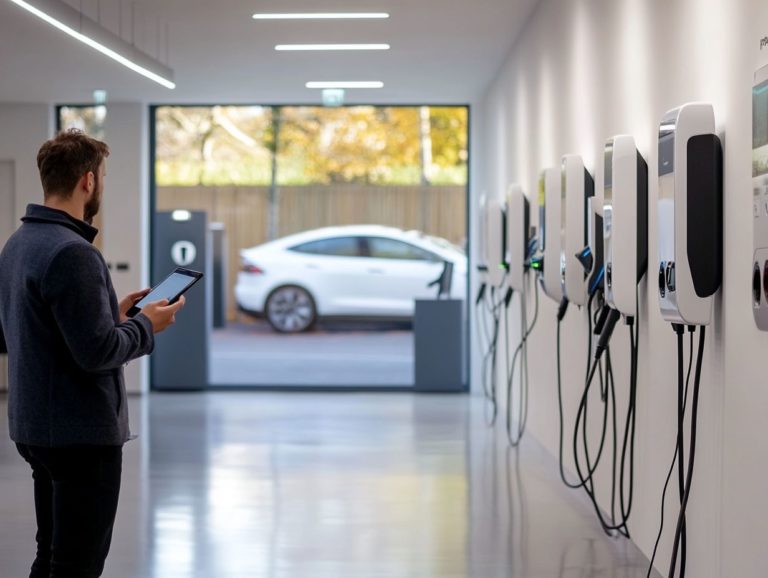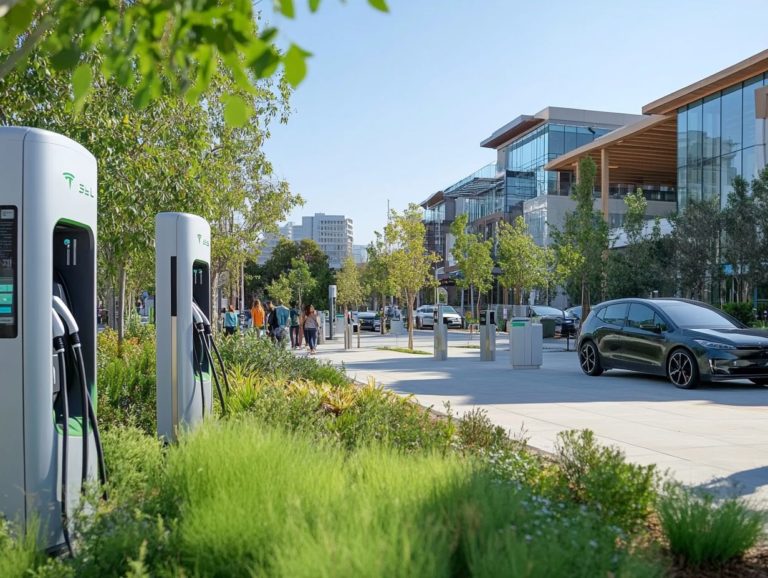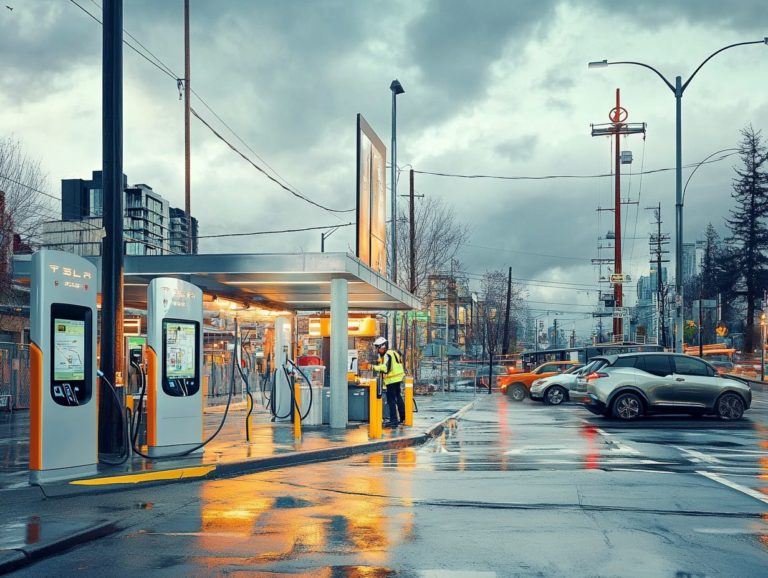Electric Vehicle Charging: Common Myths Debunked
Electric vehicle (EV) charging stands as a pivotal element in the expanding EV landscape, yet it is often clouded by misconceptions that can lead to confusion.
This article addresses common myths surrounding EV charging. It reveals the truths beneath them and delves into the myriad benefits of charging ranging from environmental advantages to cost savings. We will provide a comprehensive overview of the various charging options available to you.
Key factors such as charging time and infrastructure are important. Dive into the exciting world of electric vehicle charging discover how easy and beneficial it can be!
Contents
- Key Takeaways:
- What is Electric Vehicle Charging?
- Busting Myths About EV Charging
- Benefits of Electric Vehicle Charging
- Types of Electric Vehicle Charging
- Important Factors to Consider
- Frequently Asked Questions
- Is it true that electric vehicle charging takes a long time?
- Will charging an electric vehicle increase my electricity bill?
- Do electric vehicle batteries degrade over time?
- Can I charge my electric vehicle in the rain?
- Is it safe to leave my electric vehicle charging overnight?
- Do I need to fully deplete my electric vehicle’s battery before charging?
Key Takeaways:
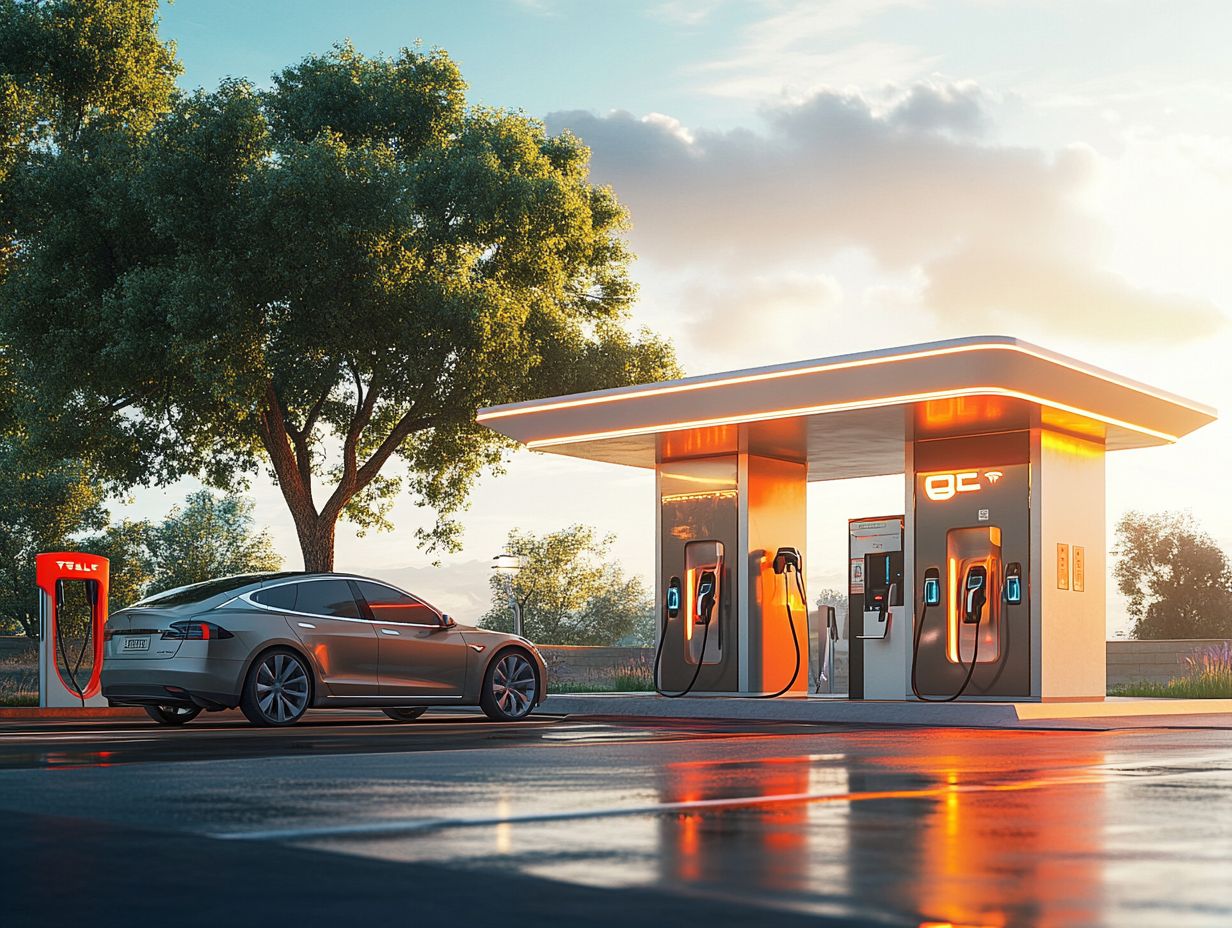
- Electric vehicle charging is the process of recharging the battery of an electric vehicle, allowing it to run on electricity.
- Several myths surround electric vehicle charging, but they can easily be debunked with factual information and data.
- Electric vehicle charging offers numerous benefits, including reducing carbon emissions and saving money on fuel costs.
What is Electric Vehicle Charging?
Electric vehicle charging encompasses the vital process of supplying electricity to electric vehicles (EVs). This process powers their electric motors and recharges their batteries. It is fundamental for various models, including the esteemed Tesla Model S and the versatile Chevy Bolt EV.
By embracing electric vehicles, you can significantly reduce reliance on gasoline cars. This shift helps in reducing pollution from power plants that contribute to climate change. With ongoing advancements in charging infrastructure the network of charging stations available for electric vehicles you can enjoy the advantages of zero emissions and contribute to a cleaner, more sustainable transportation future.
Busting Myths About EV Charging
Despite the surge in electric vehicle popularity, numerous myths and misconceptions about charging continue to linger, obstructing their widespread acceptance. Many people mistakenly think charging an electric vehicle is less convenient than refueling a gasoline car, but understanding EV maintenance myths can help clarify these misconceptions.
Others grapple with concerns about range anxiety and the safety of electric vehicles. Tackling these myths head-on is essential for cultivating a clearer understanding of the remarkable capabilities and benefits of safe electric vehicles, including common charging issues with EVs, as well as the rapidly advancing charging infrastructure.
Debunking Common Misconceptions
Common misconceptions about electric vehicles can create unnecessary confusion about their practicality and benefits, especially regarding charging stations and battery replacements. Many believe that electric vehicles need frequent battery replacements, which they think could increase their carbon footprint. Others assume they produce tailpipe emissions similar to gasoline cars, but that’s far from reality.
In truth, advancements in battery technology have greatly enhanced longevity. Many electric vehicle batteries last over a decade before requiring replacement. The idea that charging stations are few and far between is misleading; the infrastructure for electric vehicles has expanded rapidly, making it easier than ever for you to find convenient charging options.
Studies indicate that many drivers charge their vehicles at home or work, significantly reducing the need for frequent stops at public charging stations. By understanding these facts, you can dispel the myths surrounding electric vehicles and appreciate their potential as sustainable, low-emission alternatives to traditional combustion engines.
Ready to make the switch? Learn more about electric vehicles today!
Benefits of Electric Vehicle Charging

Electric vehicle charging offers many benefits beyond just convenience. It significantly helps the environment and can save you money in the long run.
Electric vehicles play a crucial role in reducing greenhouse gases and power plant emissions. This leads to improved air quality and a positive impact on climate change.
By tapping into renewable energy sources, you can achieve lifetime sustainability and better performance.
Electric vehicle charging is not only practical but also a smart investment for your well-being and the health of our planet.
Environmental and Cost Benefits
Electric vehicle charging has great environmental and financial benefits. By using renewable energy, we can reduce carbon emissions and lessen our reliance on fossil fuels.
A study by the International Council on Clean Transportation (ICCT) highlights that adopting electric vehicles could slash greenhouse gas emissions considerably. Projections estimate a reduction of over 90 million metric tons by 2030 in the U.S. alone.
As an electric vehicle owner, you ll appreciate the lower operational costs from reduced maintenance and energy expenses. One report suggests you could save around $700 annually compared to traditional gasoline vehicles.
Cities are investing in charging infrastructure, fostering local economies while promoting cleaner air and a healthier environment for generations to come.
Types of Electric Vehicle Charging
Electric vehicle charging falls into three main types: Level 1, Level 2, and DC Fast Charging. Each type meets different needs and offers different charging speeds.
Grasping the differences among these charging methods is essential for enhancing your overall charging experience and maximizing the benefits of each option.
Level 1, Level 2, and DC Fast Charging
Level 1 charging is the slowest option and usually occurs at home with a standard 120-volt outlet.
Level 2 charging is faster, using a 240-volt outlet suitable for homes and public stations. DC Fast Charging is the quickest, perfect for long trips.
Each type of charging caters to different needs based on your circumstances and vehicle capabilities. For example, Level 1 is perfect for overnight charging, allowing you to plug in your vehicle at home and wake up to a full battery.
In contrast, Level 2 is ideal for venues like workplaces and shopping centers, where you can charge during the day and be ready for your evening commute. DC Fast Charging is a game-changer for road trips, enabling you to recover significant battery life in just minutes.
By understanding these distinctions, you can choose the optimal charging strategy that fits seamlessly into your lifestyle.
Important Factors to Consider

When considering electric vehicle charging, focus on charging time, cost, and the available infrastructure. These are key for a smooth transition to electric vehicles.
Evaluating these factors will make your switch to electric vehicles seamless and efficient. Explore your charging options today and take the first step toward a sustainable future.
Charging Time, Cost, and Infrastructure
Charging time, cost, and availability of charging infrastructure are crucial considerations for electric vehicle owners. These factors significantly shape your ownership experience.
For example, Level 1 charging uses a standard home outlet and may take longer. In contrast, Level 2 chargers are faster and can be found at public stations or installed at home, making them more practical for daily commuting needs. Then there s DC Fast Charging, which offers substantial power in a short time, ideal for those longer road trips.
Evaluating the costs of these charging options is also important. By understanding the variations in electricity rates, potential installation expenses, and subscription fees at public charging stations, you can optimize your budget and refine your charging habits effectively.
Frequently Asked Questions
Is it true that electric vehicle charging takes a long time?
Not necessarily. The time it takes to charge an electric vehicle depends on the charging method and the vehicle’s battery size. Fast chargers can charge up to 80% in 30 minutes, while regular home chargers can take all night for a full charge.
Will charging an electric vehicle increase my electricity bill?
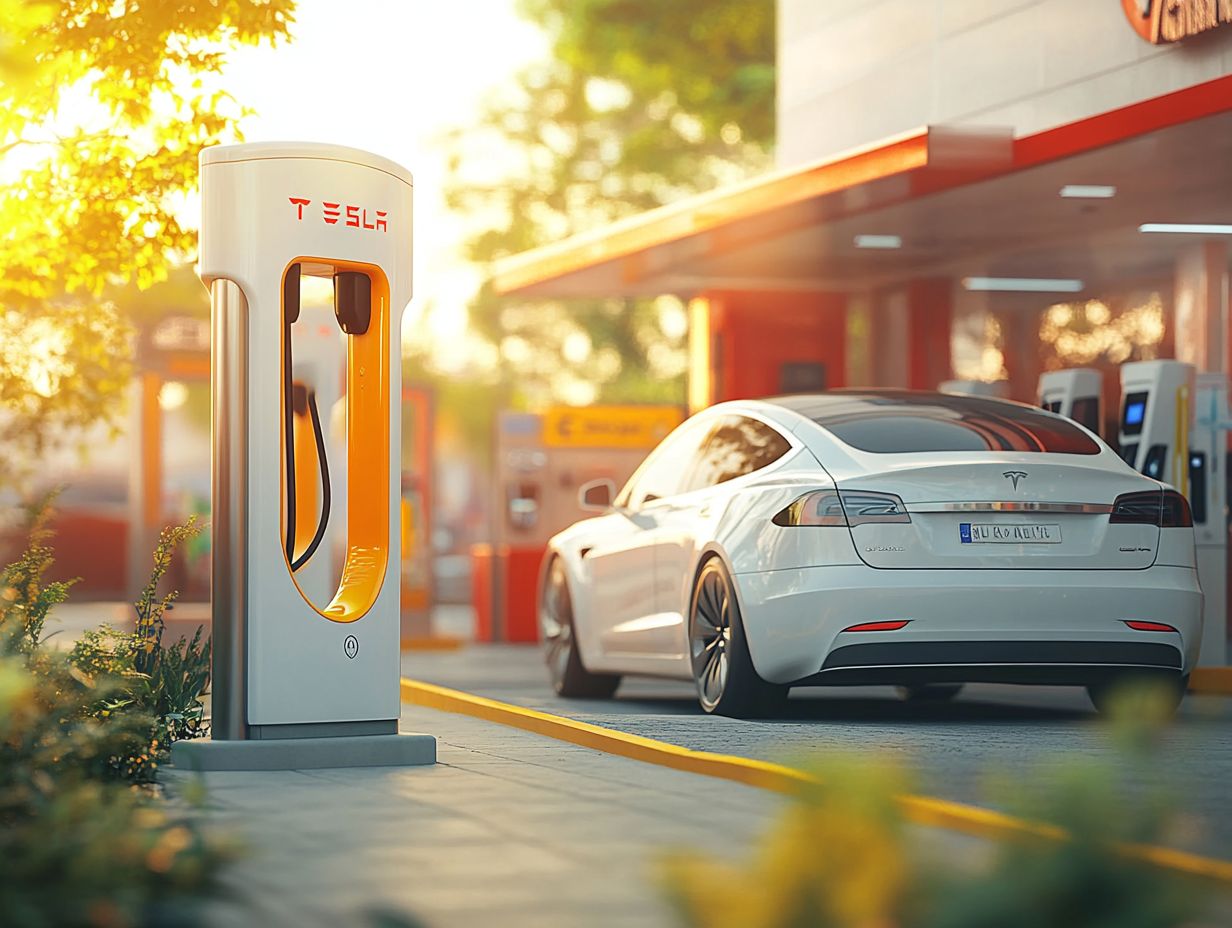
Yes, but the cost is significantly lower compared to traditional gasoline costs. On average, charging an electric vehicle at home can cost about $0.12 per kilowatt-hour, while gasoline costs approximately $2.25 per gallon.
Do electric vehicle batteries degrade over time?
Yes, electric vehicle batteries gradually lose capacity, but don’t worry! Manufacturers back them with solid warranties to ensure you re covered and the battery will retain a certain percentage of its original capacity for a specified number of years or miles.
Can I charge my electric vehicle in the rain?
Yes, you can safely charge your electric vehicle in the rain. Charging stations are designed to withstand various weather conditions, including rain and snow. It is important to follow the manufacturer’s instructions and ensure the charging port is properly sealed.
Is it safe to leave my electric vehicle charging overnight?
Yes, it is safe to leave your electric vehicle charging overnight. Modern electric vehicles have built-in safety mechanisms that prevent overcharging, and the charging process will automatically stop when the battery is fully charged.
Do I need to fully deplete my electric vehicle’s battery before charging?
No, you do not need to fully deplete your electric vehicle’s battery before charging. In fact, it is recommended to maintain a charge between 20-80% for optimal battery health. Regularly charging your electric vehicle can help prolong the battery’s lifespan.
Curious about your charging options? Dive into our comprehensive guides now!

